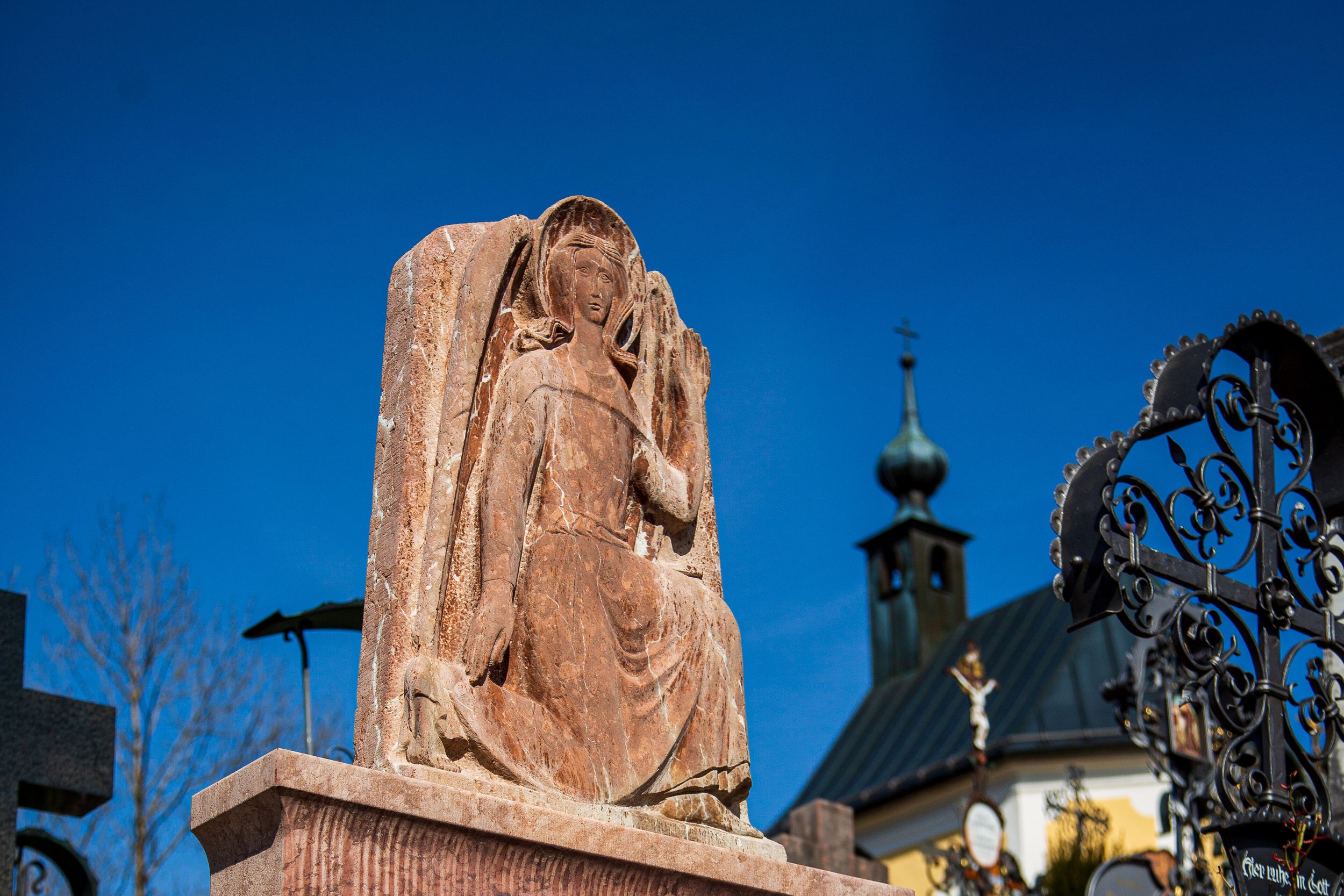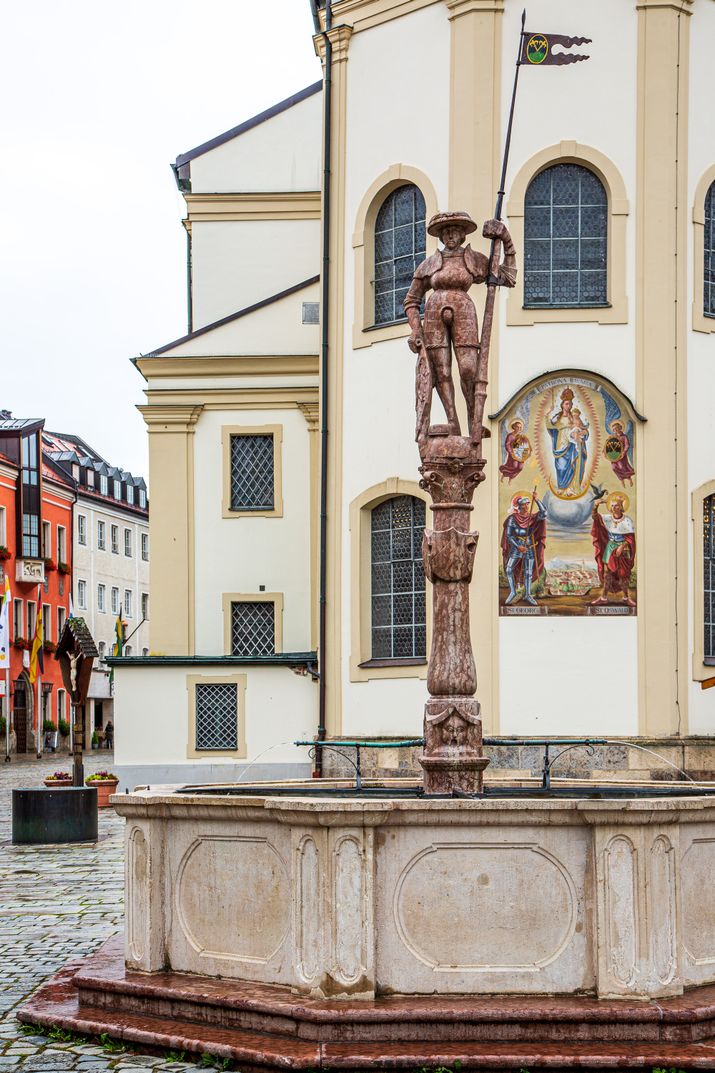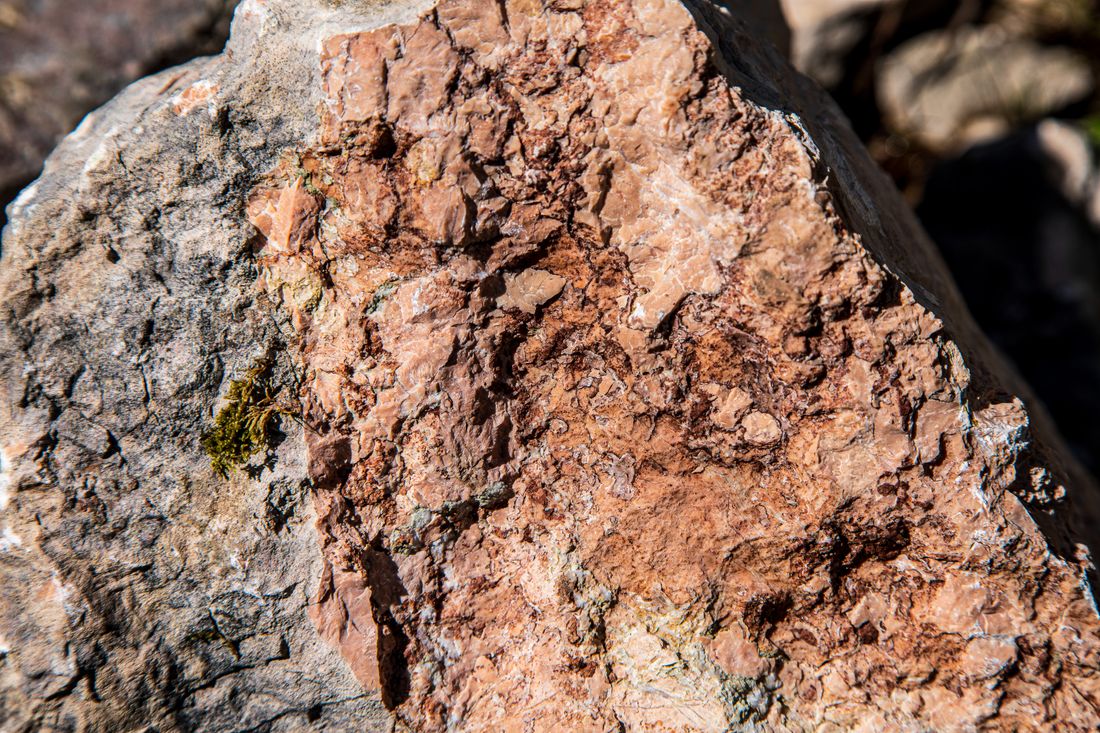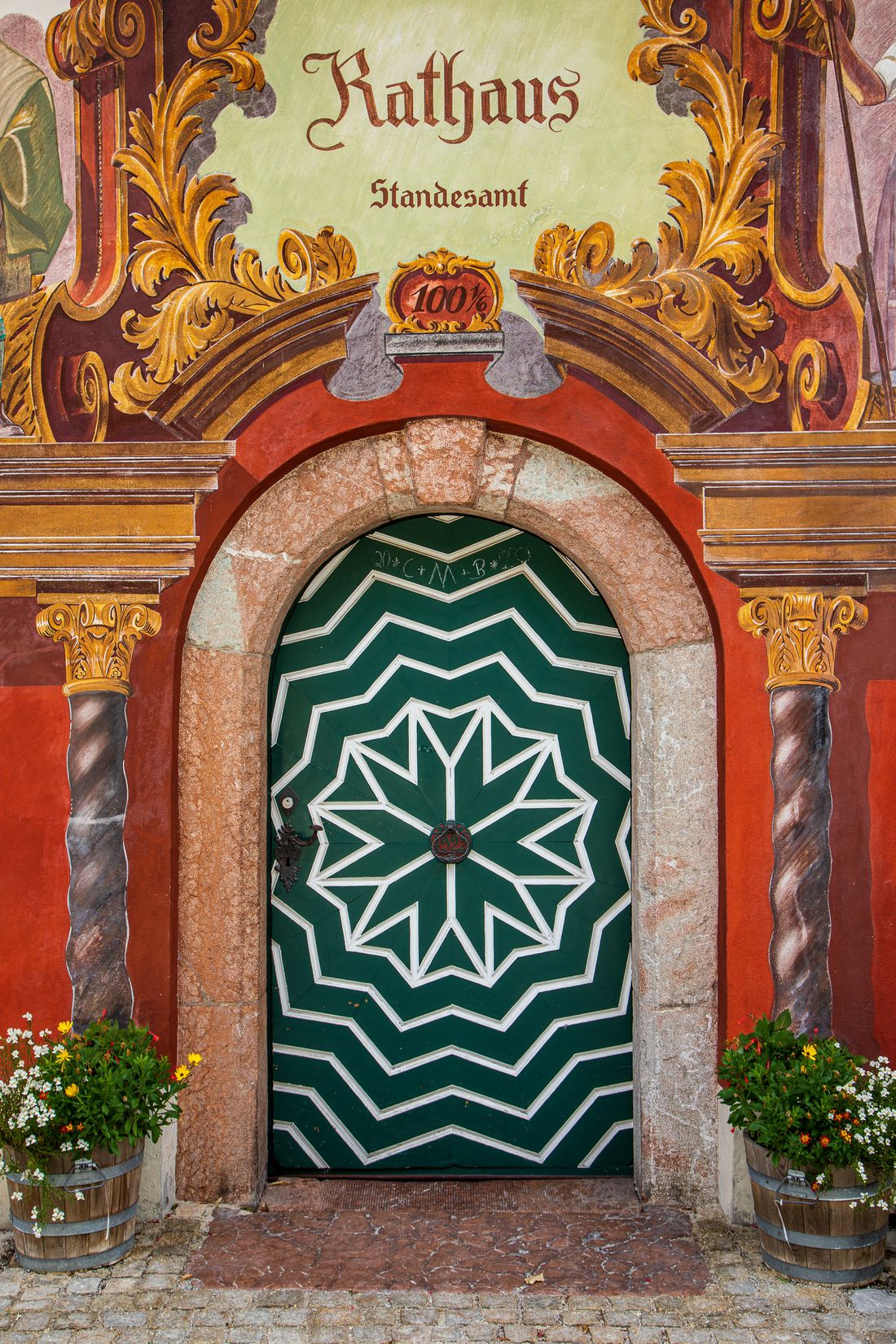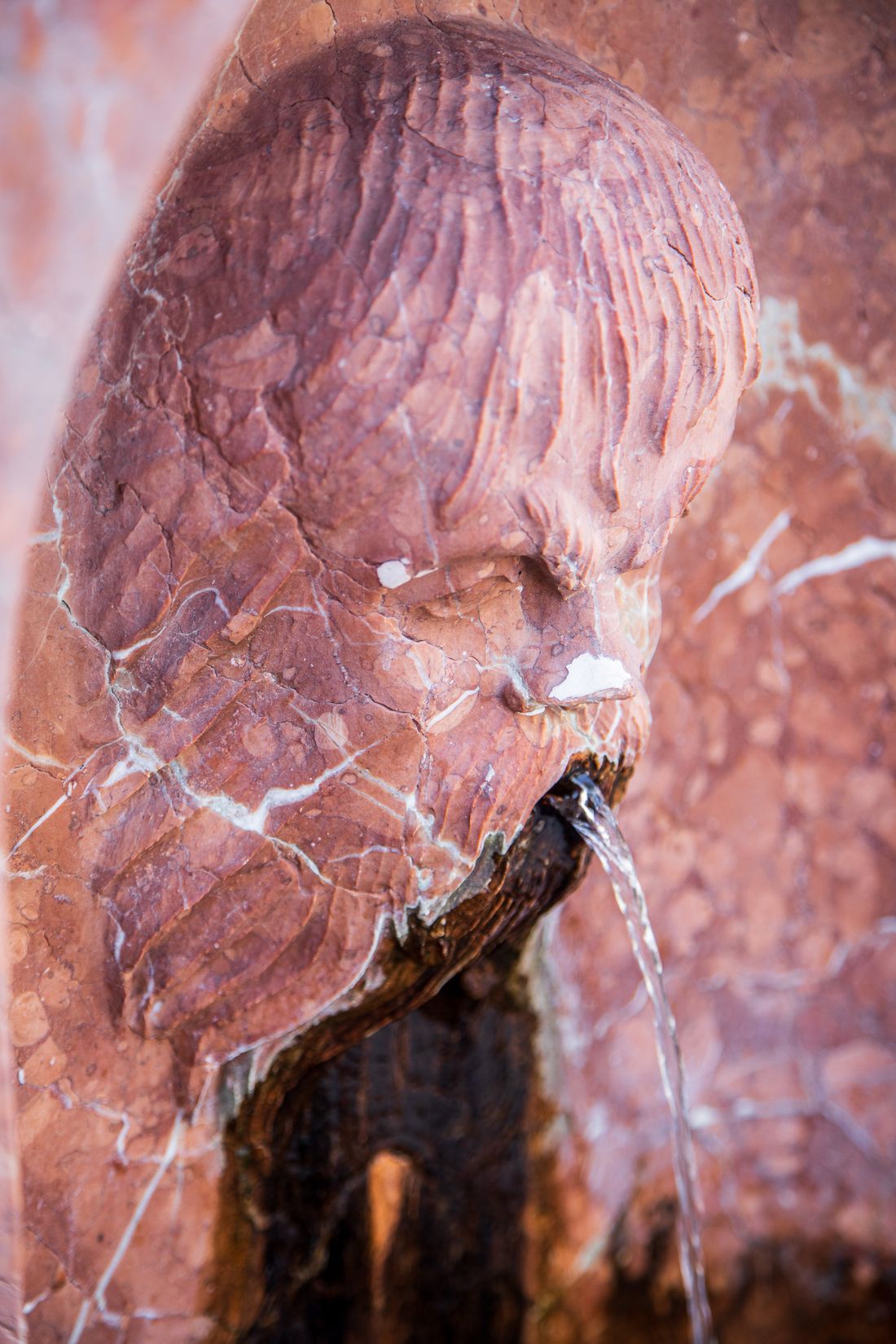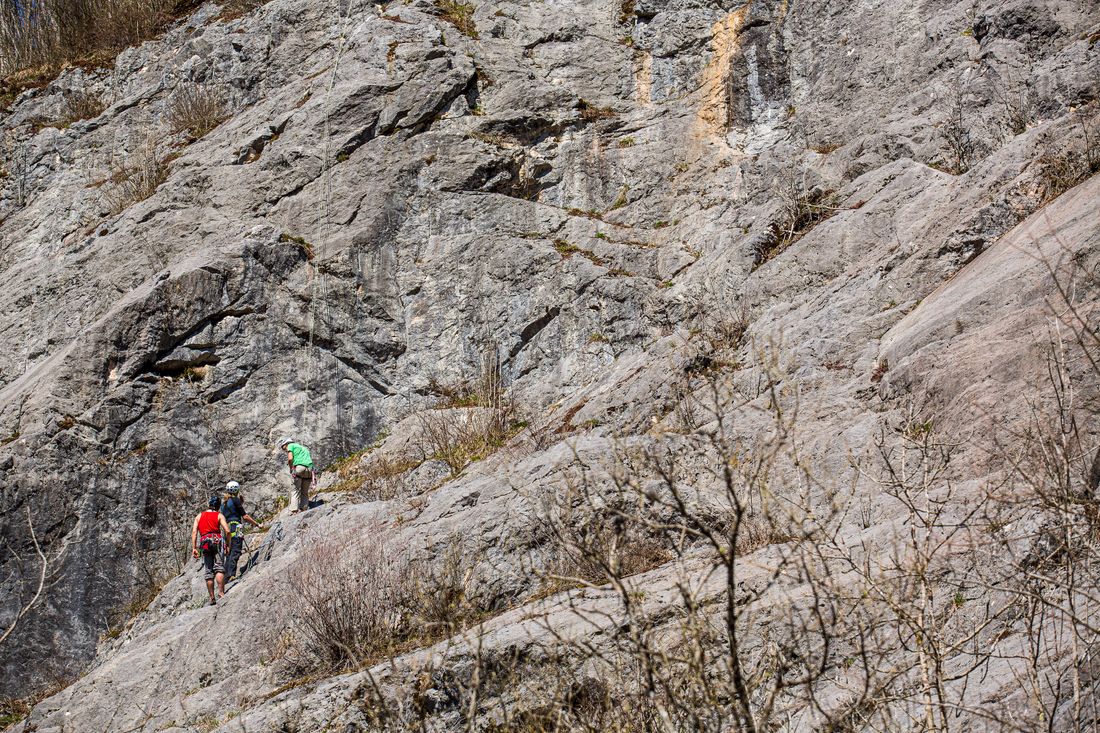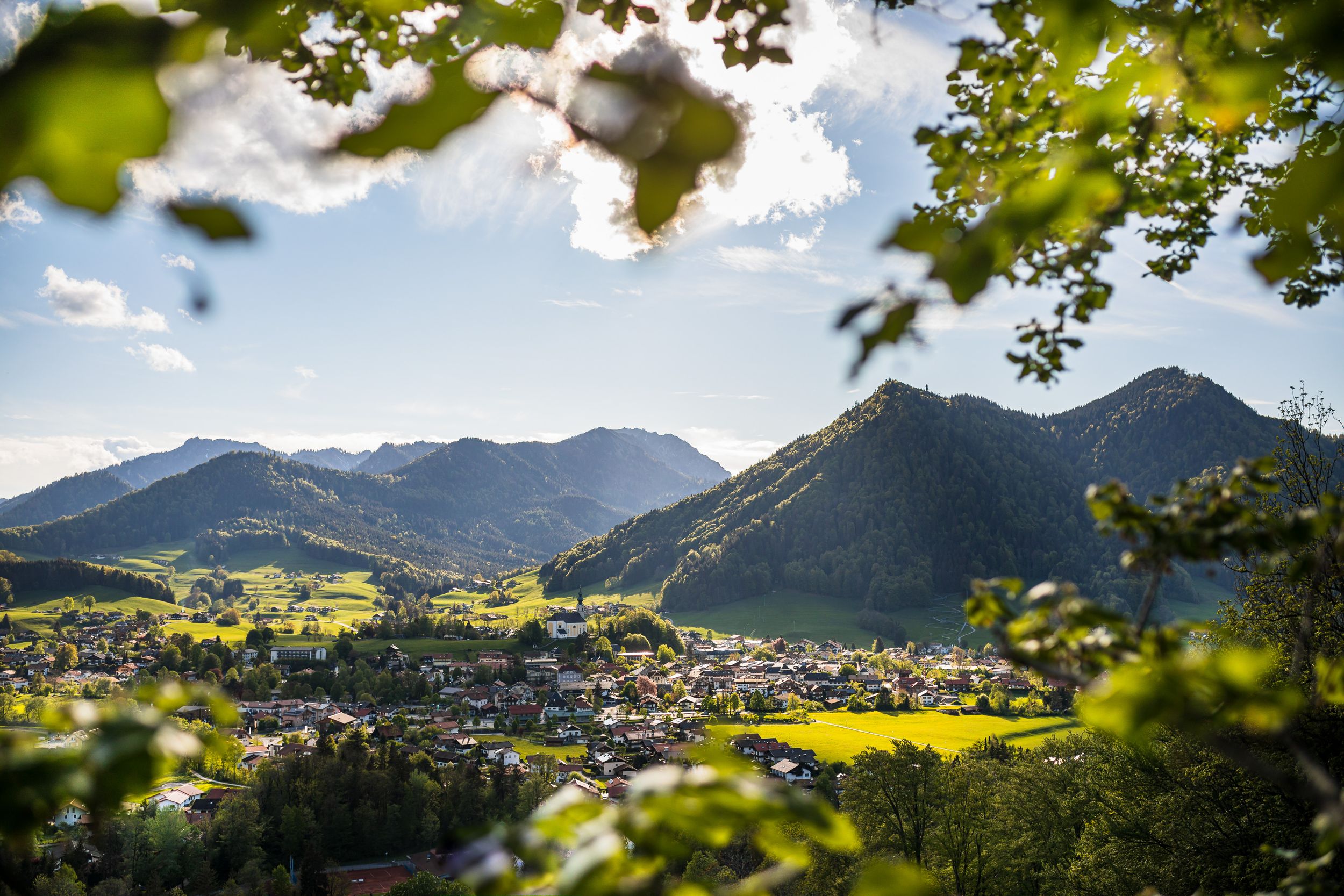Widely spread
There is also Ruhpolding marble on the town square in Traunstein. The Lindlbrunnen fountain has been there for about half a millennium. The column and knight figure, which is assumed to be Saint Leonard of Noblac, stoically defy time, wind and weather and testify to the rock's durability. Because a lot of valuable building material was needed at the Ducal Court in Munich at the beginning of the modern era and material from local soil was preferred - the Wittelsbachers loved the splendour of the Renaissance at the time - Ruhpolding marble can also be found there, for example in the Residenz in Munich or in the resting figure of the warrior in the Munich war memorial.
Even the mighty pillars of Nuremberg train station were once broken from the Haßlberg tunnels. Because of its ability to be polished and its beautiful colour, it was used in the Haus der Kunst in Munich and in the new German Embassy building in London.
In and around Ruhpolding itself, the marble is found in baptismal fonts, fountains and gravestones and in stone doorframes, which were common at that time. It was used for repairs to the electoral palace and for the marble high altar in Trostberg. It adorns the altar of the Johanneskirche in Ruhpolding and the AlpenSole fountain in Bad Reichenhall. The term Ruhpolding marble has been kept throughout the centuries, probably because it is as easily to work with and sand as the original.
